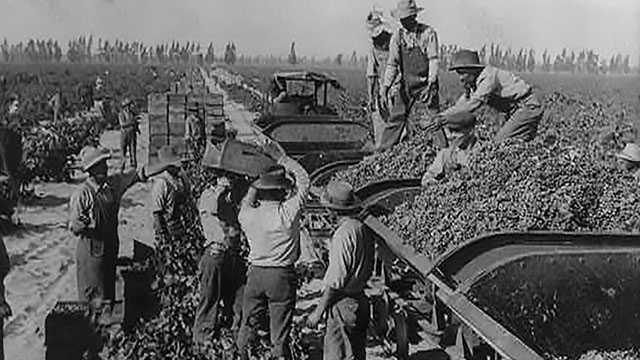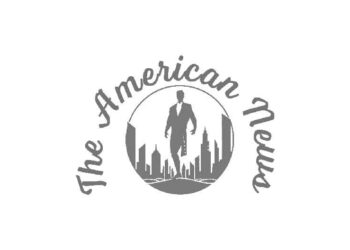How the Gold Rush, Prohibition, and a 1990s news report helped define American wine consumption.
Labeling bottles of wine in Sonoma County, California, in 1942. Russell Lee/Library of Congress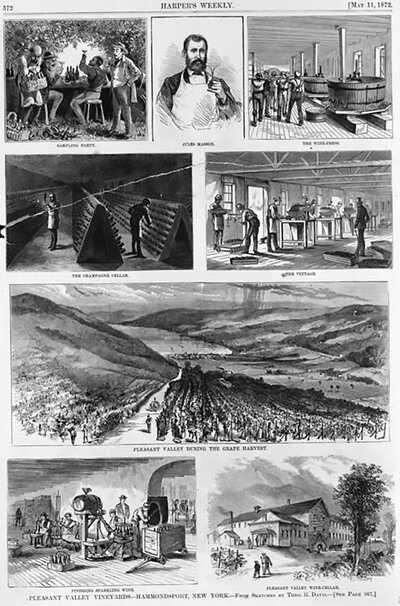 Illustrations from 1872 concerning wine making from Pleasant Valley Vineyards in Hammondsport, New York. Theo. R. Davis/Library of Congress
Illustrations from 1872 concerning wine making from Pleasant Valley Vineyards in Hammondsport, New York. Theo. R. Davis/Library of Congress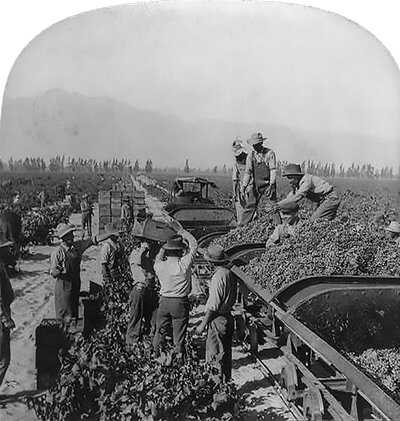 Workers loading “gondola” R.R. cars to haul grapes for sacramental and medicinal wines in Guasti, California, circa 1923. Philip Brigandi/Library of Congress
Workers loading “gondola” R.R. cars to haul grapes for sacramental and medicinal wines in Guasti, California, circa 1923. Philip Brigandi/Library of Congress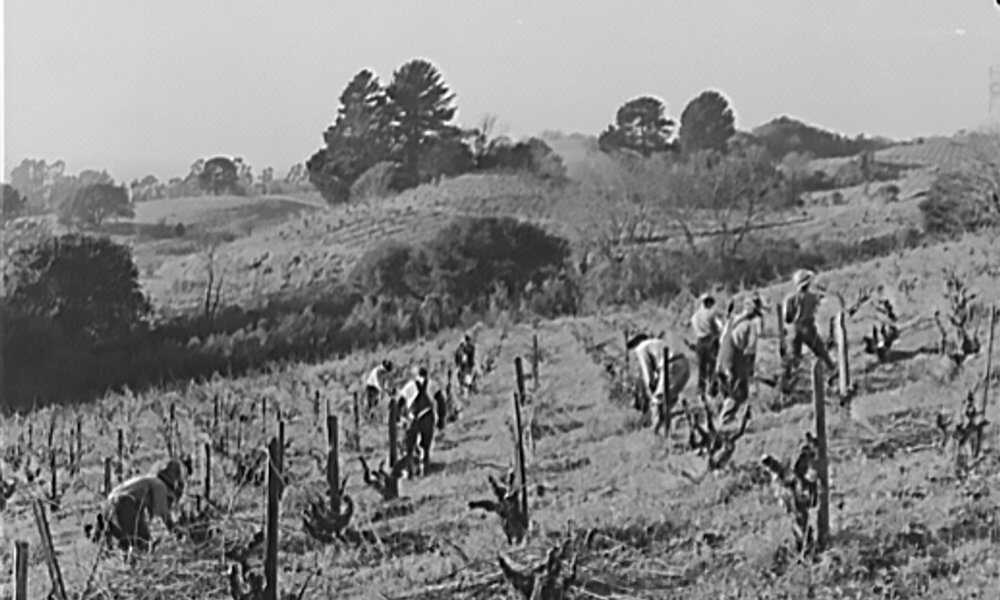 Pruning grape vines in wine vineyard in Sonoma County, California, in 1942. Russell Lee/Library of Congress
Pruning grape vines in wine vineyard in Sonoma County, California, in 1942. Russell Lee/Library of Congress
In 1976, California winemakers pulled off an upset when they beat French winemakers in a blind tasting known as the “Judgment of Paris.” What effect did that have on the American wine industry?
From a marketing perspective, it was a huge validation of the quality of the top California wines. The French wines were recognized to be the highest quality in the world. The tasting showed that our wines, as judged by French experts, were just as good. And they were cheaper! So the 1976 tasting legitimized what the new wineries had started a decade earlier — in some cases even less than a decade. It became a very interesting story.
Was there a turning point after that? Did we see increased wine sales?
Actually, in the 1980s, we experienced a decline in per capita consumption of wine in the U.S. Reagan became president, and society started hearing “just say no” to drugs and alcohol. The older baby boomers were married with children. And there are some interesting studies that show that when you have little kids at home, you don’t drink as much alcohol. So the 1980s were a quiet period for the California wine industry.
That changed in 1991 when Morley Safer went on 60 Minutes and talked about the “French paradox.” He told America that the leading causes of death in the U.S. for white males were heart attacks and strokes. Safer pointed out that the French ate as much fat as Americans, but that they had a lower rate of cardiovascular problems. And he explained that epidemiologists thought it might be due to the fact that the French drank much more red wine than Americans did.
Once again, there was a leading edge of baby boomers who had enjoyed white wine in the ‘70s, decreased their wine consumption in the 1980s, and now, in the 1990s, were in their late 40s, early 50s. Their parents were aging and the boomers were becoming more concerned about their own health. Safer had basically just told them, ‘Hey, drink red wine — it’s good for you!’
It’s hard to prove that the 60 Minutes segment was directly responsible for the increase in red wine consumption during the 1990s, but it is a fact that American per capita consumption of red wine doubled in that decade.
What is the state of the American wine industry today?
Today, the U.S. is the fourth largest wine producer in the world, behind the “Big Three” of Italy, France, and Spain. Although wine is produced in every state in the country, California wine still dominates; in 2016, about 85 percent of all American wine came from the Golden State. We export about 20 percent of our production and consume the rest in the U.S. As a country, we’re the largest consumer of wine both by volume and by value, having passed France in total volume consumption a few years ago.
Wine has often been perceived as a “foreign” beverage — and prior to 1850 and California joining the Union, it was true that the vast majority of wine was imported. Today, when your neighbors down the road have planted a vineyard and are producing wine from local grapes, it doesn’t seem quite so foreign.
Published December 2017.
Source link : http://www.bing.com/news/apiclick.aspx?ref=FexRss&aid=&tid=66fdfe8ef5ef48eca9e830030f61bb42&url=https%3A%2F%2Fwww.pbs.org%2Fwgbh%2Famericanexperience%2Ffeatures%2Fwine-america%2F&c=17718100170671692656&mkt=en-us
Author :
Publish date : 2017-12-22 03:25:00
Copyright for syndicated content belongs to the linked Source.

